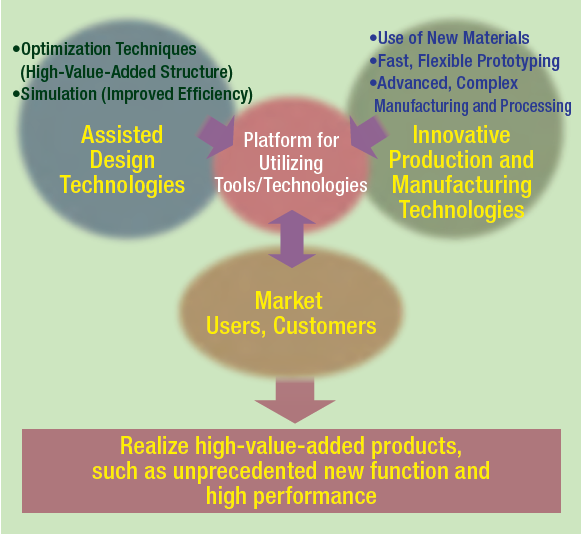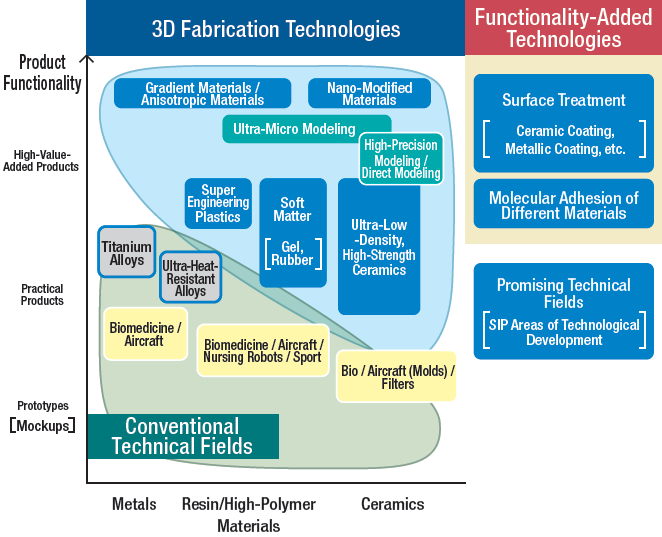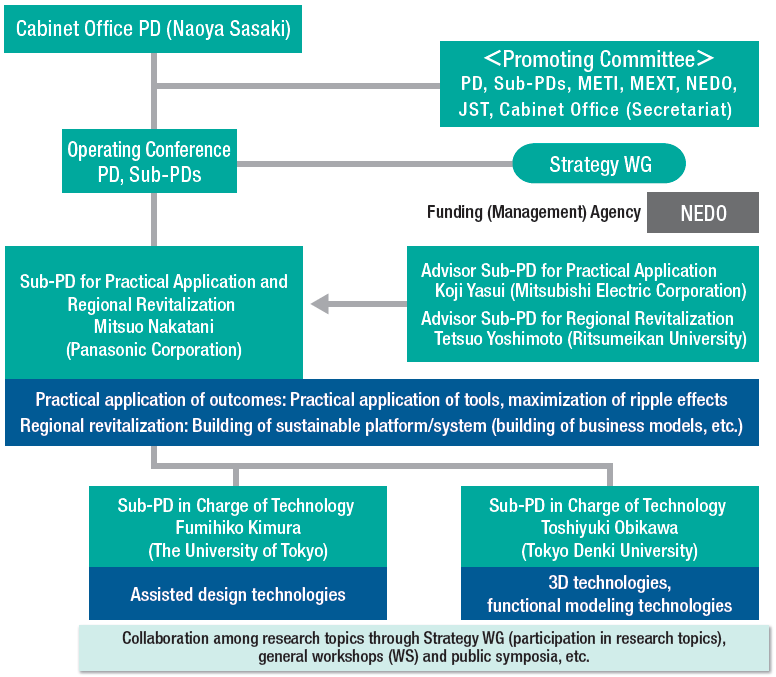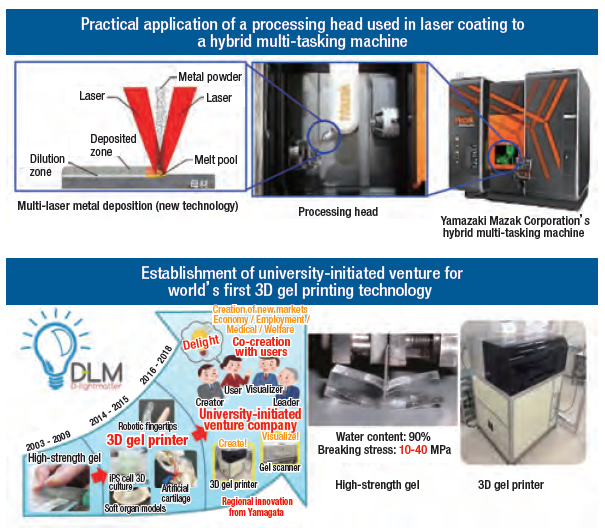Innovative Design/Manufacturing Technologies
Innovative Manufacturing — Manufacturing of New Function, High Performance and Unprecedented High Added Value
In order to prevail against recent fierce international competition, businesses need to create high-value-added products. The objectives of this program are to develop innovative manufacturing technologies leading to products comprised of unconventional materials and functions satisfying a variety of personal and business needs, and to build a platform/system where those technologies can be used. The goals of the program are for the creation of high-value-added products spurred by new ideas conceived through experiencing new technologies, and to strengthen Japan’s industrial competitiveness and revitalize its regional areas.
Research and Development Topics
- 1. Research and develop innovative production and manufacturing technologies
- Research and develop innovative production and manufacturing technologies that make possible new structures, complex shapes, greater function, better quality and lower cost. From FY 2017, priority will be placed on promoting 3D fabrication technologies aimed at the diverse application of materials and the development of new materials, and on functionality-adding technologies, such as bonding and surface treatment technologies which add resistance or other diverse functionality.
- 2. Research and develop assisted design technologies utilizing optimization and simulation
- Research and develop technologies which make possible diverse functional design, based on needs, value and performance, as well as high-quality product design, incorporating a variety of data such as production and manufacturing conditions. From FY 2017, a particular focus will be placed on strengthening and promoting assisted design technologies, such as simulation and optimization, with a goal of realizing high-value-added product design.


Exit Strategies
- 1. Develop tools from R&D results, provide technologies
- From FY 2017, focus on more promising and advanced industrial areas, such as healthcare and the advanced industry, and prioritize 3D fabrication technologies and surface treatment/bonding technologies. Going forward provide tools/technologies to industry which contribute to their practical application in business, such as manufacturing equipment and software.
- 2. Build a system for creating high-value-added products
- Build a platform where regional SMEs and microenterprises can experience and use tools/technologies. Enable businesses to create highvalue-added products, spurred by new ideas conceived through the experience. In addition, build mechanisms enabling the platform to continue to be used beyond SIP.
Implementation Structure
The Promoting Committee is chaired by the Program Director (PD), who formulates and promotes research strategies. The Cabinet Office serves as secretariat. The Committee is composed of relevant ministries, agencies, and experts who provide overall coordination. This committee uses funds and management capacity offered by NEDO. The Committee has selected the best research and development personnel as needed through open recruitment.
In FY 2017, a new position of Sub Program Director (Sub-PD) for Practical Application and Regional Revitalization has been established to strengthen the practical application of development outcomes and initiatives for regional revitalization, and personnel have been assigned from industry. The Committee strengthens and promotes initiatives designed to move the program closer to exit.

Progress to Date
Practical Application, Dissemination and Expansion of Tools/Technologies
During the past three years of research and development, the program has laid out the framework enabling businesses to utilize a number of technologies and tools that are already at the practical application level.
For instance, the processing head comprising six superposed beams for use in laser coating, which was developed by the SIP research team led by Professor Tsukamoto of Osaka University’s Joining and Welding Research Institute (JWRI), has been applied by the Yamazaki Mazak Corporation to its hybrid multi-tasking machines.
In addition, on November 1, 2016, D-Light Matter, Inc. (DLM) was established by a team led by Professor Furukawa of Yamagata University’s Life-3D Printing Innovation Center (LPIC), as a means of creating business through the practical application of gel materials in devices based on the results of SIP research and development.
In FY 2017 and beyond, the program will promote business applications for other research topics too, building them up into highly versatile and practical technologies and tools.


